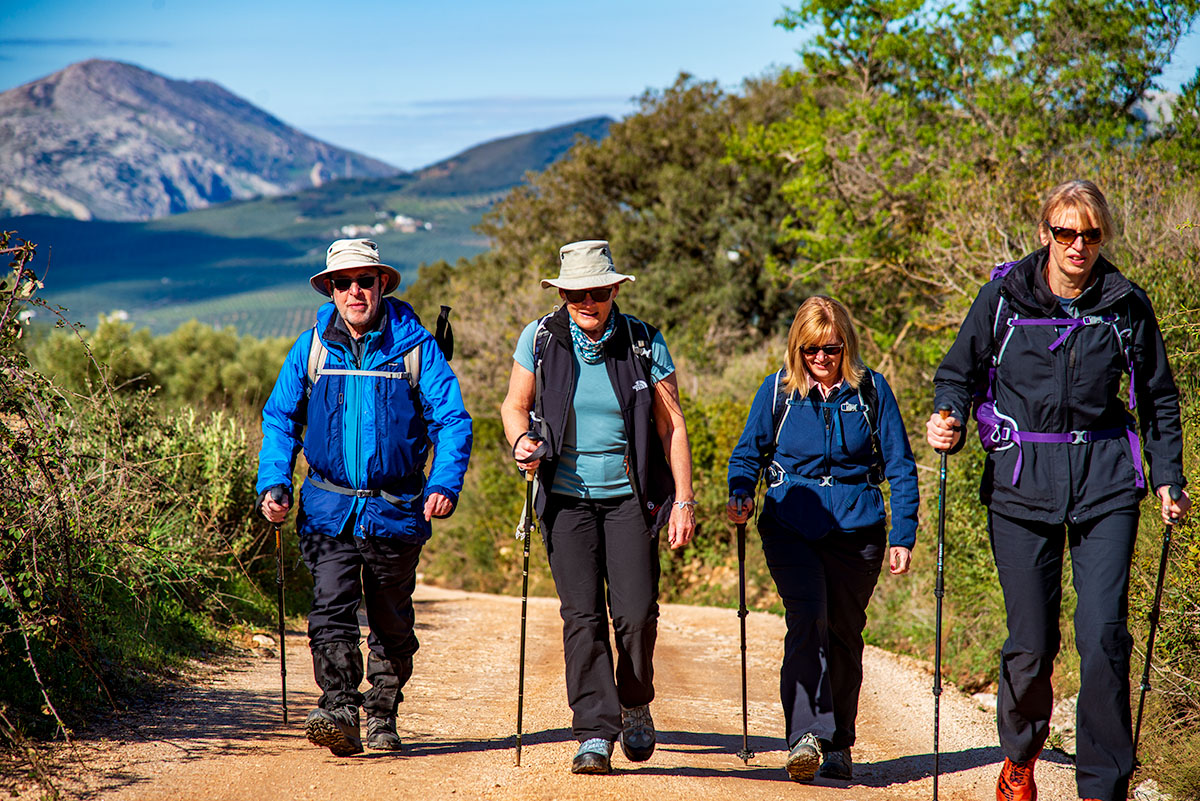You do not need anything special for walking in Andalucia, and the clothing, equipment, and accessories you use for your hikes in the hills and mountains should be entirely suitable.
And with such a vast range of equipment on sale, it would not be easy to highlight specific items that would be useful for your trip to Andalucia, however......
I have found two pieces of equipment invaluable for walking here in Andalucia.
I will admit to being a recent convert, as I only saw the light when a friend who accompanied me on our first Great Malaga Path long-distance hike brought them along.
Trekking Poles
Such is the strength of my conversion to using trekking poles that any walker who arrives here for their holiday without them can usually be converted before they leave.
What is so great about them? It has more to do with the terrain we will walk over. The paths and tracks that we use in the mountains, and even on their lower slopes, are, on the whole, less worn, making progress slower and slightly trickier. Add in the karstic limestone that protrudes through the surface, and you have a route requiring a little more effort to pass.
Using a pair of poles or just a single pole, I can steady myself on the flat, reduce the effort required from my legs when ascending, and, most importantly, brace on the descents, reducing the chance of a slip or twisted ankle. The obvious benefits are for safety, but using them does conserve energy, and I'm all for anything that makes the day easier.
You can buy trekking poles made from lightweight and collapsible materials, so packing them with your luggage is no hassle.
One final thought: incredibly, there is a proper way to use poles in how you hold and place them relative to the angle at which you walk. This video, one of many you can find online, is excellent: short, sweet, and straight to the point.


Hydration System.
When the day out on the trail can be long and hot, this is a must-have piece of kit.
The maxim of 'little and often' is applied to food and drink when out for the day, but in reality, with your drink bottle tucked away in the backpack or stowed in a side pocket, grabbing that liquid refreshment may not be as often as it should be.
A hydration system comprising a plastic bladder stored in your backpack and a short hose from the backpack to your shoulder makes it straightforward to keep hydrated. And with sizes up to 2.5 litres, you can carry enough for a long day of hiking.
Keeping hydrated is essential, especially when the daytime temperatures can be around 20 degrees in December or January. It can be closer to 30 degrees in September or May, making hydration a vital concern.
I have some helpful information on hydration in this article.
Your local outdoor shop will be able to offer much better advice than I can on trekking poles and hydration system selection, and as is often in life, you do get what you pay for.








